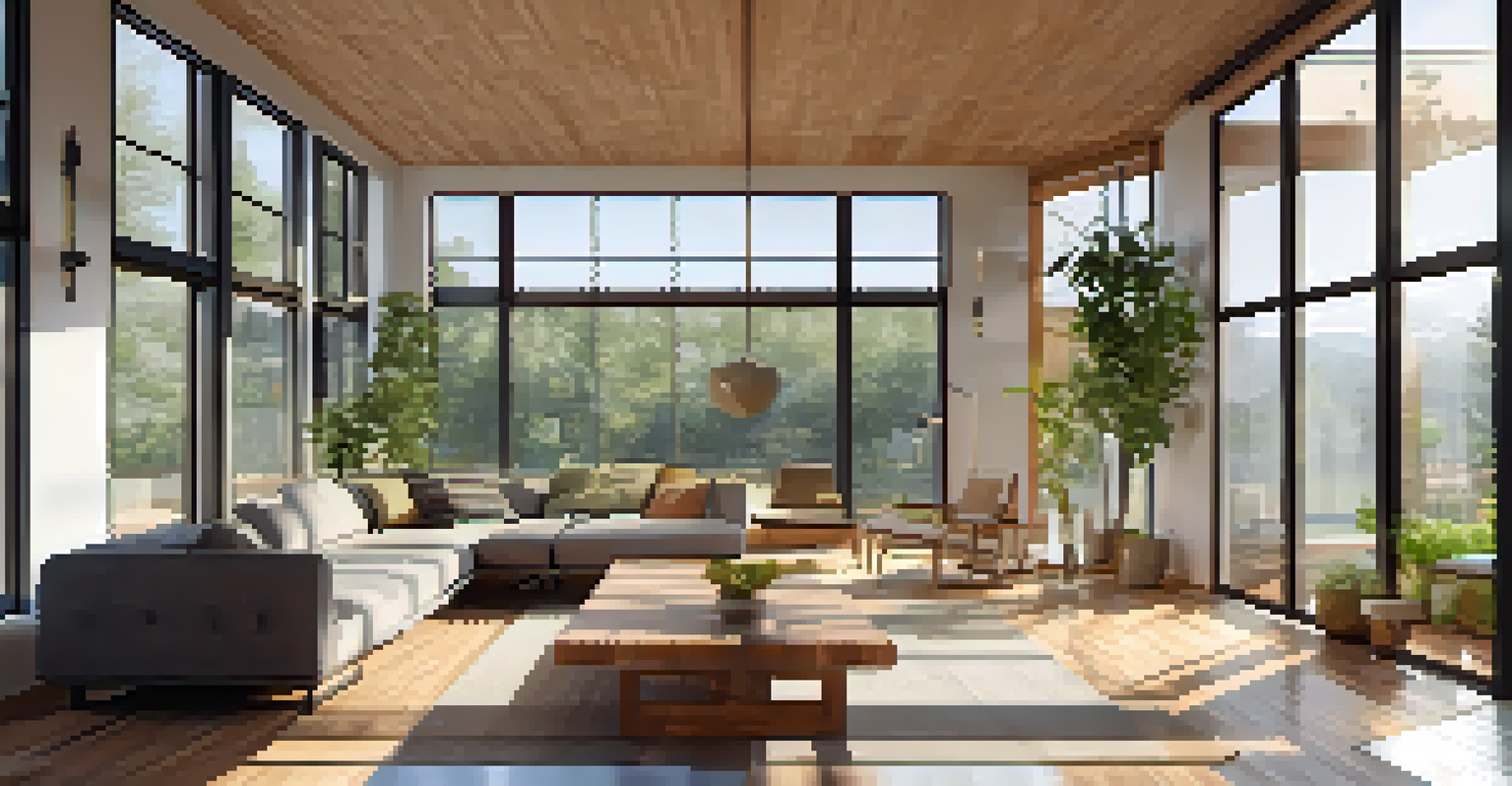Utilizing Passive House Principles in Eco-Friendly Home Design

Understanding Passive House Principles in Home Design
Passive House principles focus on creating energy-efficient buildings. By prioritizing insulation, airtightness, and ventilation, these homes maintain comfortable temperatures year-round. This design philosophy not only reduces energy consumption but also minimizes environmental impact.
The greatest threat to our planet is the belief that someone else will save it.
The core idea is to create a building that requires very little energy for heating or cooling. Imagine wrapping your home in a warm, cozy blanket; that’s essentially what high-quality insulation does. By eliminating drafts and heat loss, homeowners can enjoy a stable indoor climate without relying heavily on heating or cooling systems.
Incorporating these principles into eco-friendly designs means considering how buildings interact with their environment. For instance, strategic window placement can harness natural sunlight while minimizing the need for artificial lighting. This thoughtful approach makes Passive House designs not only sustainable but also highly livable.
The Role of Insulation in Passive House Designs
Insulation is the backbone of any Passive House. It acts like a thermal barrier, keeping the desired temperature in and the unwanted temperature out. High-quality insulation materials, such as rigid foam boards or cellulose, can drastically reduce energy usage in a home.

Think of insulation as a giant thermos for your house. Just as a thermos keeps your coffee hot or cold, insulation helps maintain your home's temperature. This means that in winter, your home stays warm, and in summer, it stays cool, leading to lower energy bills and a smaller carbon footprint.
Moreover, proper insulation minimizes the need for heating and cooling systems, which can be expensive to install and maintain. The less energy you use, the more eco-friendly your home becomes. It’s a win-win situation for both your wallet and the planet.
Importance of Airtightness in Energy Efficiency
Airtightness is crucial in Passive House designs to prevent energy loss. By sealing any gaps or cracks, homes can maintain their internal climate without the constant need for heating or cooling. This not only saves energy but also improves indoor air quality.
Sustainability is not a trend. It is a responsibility.
Imagine blowing up a balloon; if there are holes, it deflates quickly. Similarly, an airtight home retains heat, making it more energy-efficient. Specialized materials and techniques, such as weatherstripping and caulking, are employed to ensure every nook and cranny is sealed.
By achieving a high level of airtightness, homeowners can significantly reduce their reliance on mechanical heating and cooling systems. This results in less energy consumption, lower utility bills, and a more comfortable living environment, demonstrating how small adjustments can lead to big changes.
Ventilation: Balancing Fresh Air and Energy Conservation
Proper ventilation is essential in a Passive House to maintain air quality without losing heat. This is where heat recovery ventilation systems come into play, providing fresh air while reclaiming heat from the outgoing air. It’s like having your cake and eating it too.
Consider how playing outside on a windy day can refresh you; good ventilation does something similar for your home. It brings in fresh air and expels stale air, ensuring the indoor atmosphere remains pleasant and healthy. This is especially important in tightly sealed homes where air can become stagnant.
By integrating ventilation systems, homeowners can enjoy a constant flow of fresh air without compromising energy efficiency. This balance is vital for creating an eco-friendly home that feels as good as it performs, leading to a healthier living environment.
Harnessing Natural Light with Strategic Design
Utilizing natural light is a key aspect of eco-friendly home design. By placing windows and skylights strategically, homes can maximize daylight while minimizing heat gain. This not only reduces electricity usage but also enhances the aesthetic appeal of the space.
Picture walking into a room bathed in sunlight; it feels warm and inviting. Passive House designs capitalize on this effect by using large, triple-glazed windows that let in ample light without sacrificing energy efficiency. This thoughtful approach creates a bright and airy atmosphere.
Moreover, natural light boosts mood and productivity, making it a beneficial feature for any home. By incorporating elements that promote daylighting, homeowners can enjoy a comfortable, vibrant space while also supporting sustainable practices.
Selecting Sustainable Materials for Eco-Friendly Homes
Choosing sustainable materials is vital to the overall eco-friendliness of a Passive House. Options like reclaimed wood, bamboo, and recycled metal not only reduce waste but also contribute to a healthier indoor environment. These materials can enhance the aesthetic appeal while being kind to the planet.
Think about building a treehouse; using materials like reclaimed wood can give it character while being environmentally friendly. Similarly, every choice made in constructing a Passive House can reflect sustainability, ensuring that the home is as eco-conscious as it is beautiful.
Sustainable materials often come with the added benefit of durability, meaning homeowners can enjoy their spaces without frequent replacements. This longevity further reduces the environmental impact, proving that thoughtful material selection is a cornerstone of sustainable design.
The Long-Term Benefits of Passive House Design
Investing in Passive House design yields significant long-term benefits for homeowners. From reduced energy bills to increased property value, these homes provide both financial and environmental returns. Over time, the initial investment in energy-efficient features pays off through lower utility costs.
Imagine planting a tree; while it takes time to grow, the shade and fruit it provides later are well worth the wait. Similarly, the benefits of a Passive House accumulate over the years, leading to substantial energy savings and a smaller carbon footprint.

Additionally, these homes often require less maintenance due to their durable construction and high-quality materials. This means more time enjoying your home and less time worrying about repairs, making Passive House design an attractive option for those looking to invest in their future.